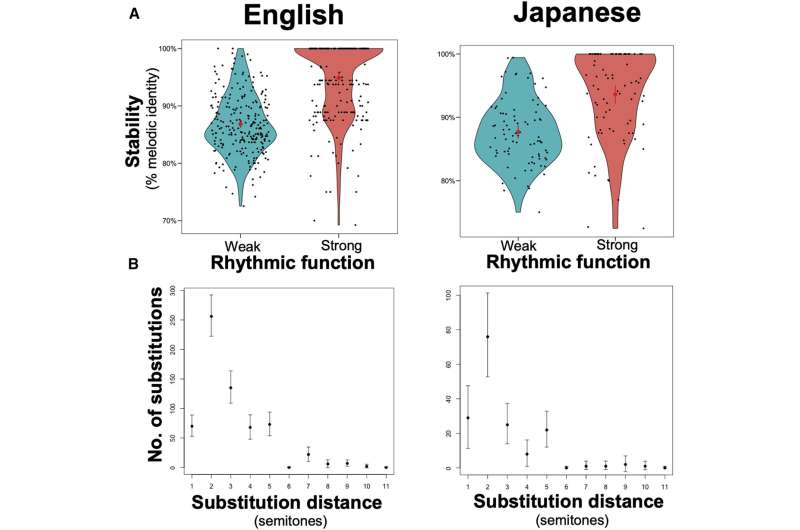Analysis of Japanese and English folk songs finds cross-cultural regularities in music evolution
A team of researchers from Japan, the U.K. and New Zealand has found that despite language differences, Japanese and English folk songs have similar cross-cultural regularities in their musical evolution. In their paper published in the journal Current Biology, the group describes modeling melodies as sequences built from an "alphabet" of 12 scale degrees and analyzing their evolution.

As the researchers note, folk songs are difficult to define, but most listeners can recognize them when they hear them. And, as they also note, folk songs typically represent the times in which they were written and very often evolve over time as conditions change. In this new effort, they sought to learn more about the evolutionary processes of folk songs—both those written in Japanese and those written in English (British and American)—and if there were similarities between the two types. To conduct an analysis of such songs, they first defined folk songs as those that have been transmitted orally from one generation to the next. They next converted the musical notation for more than 10,000 songs into letter sequences so that they could be read and processed by a computer algorithm. The algorithm they used was developed for analyzing evolutionary changes in nature but the researchers thought it could provide insights into folk song evolution as well.
In studying the results provided by the algorithm, the researchers found they were able to track insertions and deletions to songs over time—where the number of notes in a song remained constant but the notes had different values in different places. They also found that insertions or deletions were more common than substitutions. They also noted that the impact on the songs from such insertions and deletions was more profound in the Japanese songs. The researchers also found that changes to notes that played a major role in the folk songs over time were less likely to occur than those that played a more minor role, regardless of language.
The researchers conclude by suggesting that evolutionary changes to folk songs occurred in much the same way in both languages, despite them being written and sung in different scales and tones.Babies are sensitive to rhyme, rhythm and phrases in children's songs
More information: Patrick E. Savage et al, Sequence alignment of folk song melodies reveals cross-cultural regularities of musical evolution, Current Biology (2022). DOI: 10.1016/j.cub.2022.01.039]
Journal information: Current Biology ]
© 2022 Science X Networ
No comments:
Post a Comment